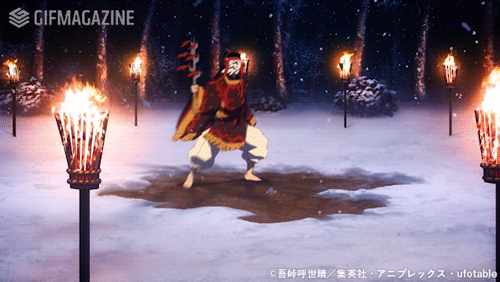
Fans of Kimetsu no Yaiba have been in for quite the treat with the new Kimetsu no Yaiba: Yuukaku-hen (Kimetsu no Yaiba - Demon Slayer: Entertainment District Arc)! Aside from the introduction of a new mission, a new Hashira and higher stakes, this arc seems to have set up for an interesting and important aspect of Demon Slayer lore pertaining to Tanjiro, how Hashiras are “made”, as well as the mysterious origins of Breathing Arts as a concept.
The Art of Lore-Shattering Conversation
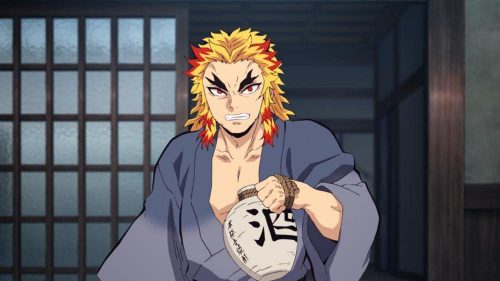
In an earlier article, we mentioned that Tanjiro’s visit to the Rengoku household devolved into an argument with Rengoku Shinjuurou, the former Flame Hashira, Kyojuurou’s father. Tanjiro was incensed at the older man for brazenly badmouthing Kyojuurou’s memory and argued in defense, but what really got Rengoku Sr going was the sight of Tanjiro’s rising sun earrings - the mark of a practitioner of a never-before mentioned Breathing Art: Sun Breathing.
Tanjiro and the audience are thrown for a loop as Shinjuurou reveals that Sun Breathing is the primordial Breathing Art; the true blueprint of all the other Breathing Arts. This creates an interesting foray into something that’s actually been quite confusing about Tanjiro’s actual elemental affinity.
We have to segue into subtextual elements, specifically, Demon Slayer nomenclature, as well as the Japanese language in spoken and written forms. However, it is quite clear that Sun Breathing is something in Tanjiro’s family line; something that, therefore, places him and the Kamado family at large in the world of the Demon Slayers long before any of us are even aware of it. These subtextual and contextual clues paint several pictures we’ll describe shortly.
“Namaenclature” and Elemental Affinity
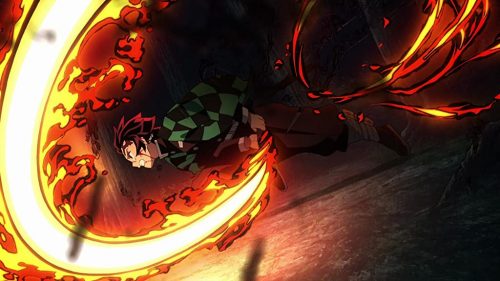
While he is trained in Water Breathing and is attracted to it by virtue of it being the style of Tomioka Giyu, Tanjiro’s characterisation has lent itself towards the element of fire in more ways than we even realize. For one, the family name Kamado is written 竈. In Japanese, the kanji 竈門 refers to a traditional Japanese charcoal oven, which were in use during 19th century Japan and prior. We know that Tanjiro supported his family by selling charcoal to nearby towns and as a result of one such excursion, he isn’t present for the brutal slaughter of his entire family.
Kamado Nezuko is the only surviving member of Tanjiro’s family and has since become a demon, something we all know by now, hopefully. In episode 19 of the first season of Demon Slayer, we are first introduced to Tanjiro’s signature move, Hinokami Kagura, which implemented movements from the Hinokami Dance a young Tanjiro would witness his father perform adeptly, despite his frail composition.
From Japanese, “Hinokami” could be understood as “God of the Sun”; however, unless one sees it written down, there’s a bit of an ambiguity with the “Hi” part that could also have it understood to be “God of Flame”. This clearly deliberate lexical plot by Gotouge has effectively set up the possibility that Tanjiro has always had an affinity to flame. But this also seems to have been a ruse, as we now know that it’s actually not necessarily Flame, but the Sun.
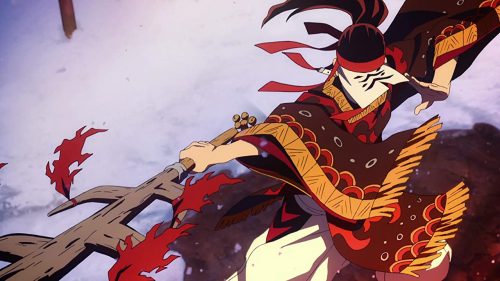
Another aspect that gave strength to the misdirection is Tanjiro’s relationship with the deceased Flame Hashira Rengoku Kyojuurou, perhaps cemented by his little brother Senjuurou relinquishing the path of the swordsman and hereby breaking several generations’ of Flame Hashira inheritance, and offering Tanjiro the guard to Kyojuurou’s Nichirin blade. We’re being led to connect “Flame Hashira” to Tanjiro, and his Hinokami Kagura attack’s flames drive this misdirection even further into the subconscious; however, this curveball has effectively given us an unforeseen yet greatly significant update to the lore.
Now back to Nezuko. Her deal is that she somehow came into contact with blood from Kibutsuji Muzan. The circumstances are unknown, but because of that, Nezuko is a powerful demon. We’ve seen her beat the demonry out of her brethren quite a few times; however, one event stands out: S1, E19. As Tanjiro first unleashes his Hinokami Kagura against the spider demon Rui, Nezuko unleashes her own signature attack for the first time: Blood Demon Art: Bakketsu (Exploding Blood)!
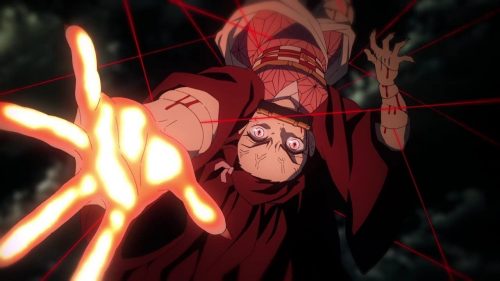
The Curse
This explosive move destroys Rui’s threads and actually gives Tanjiro’s broken blade the added boost it needed to cut through the demon’s neck. If we go back to their family name, Kamado, we can see a veiled link between the fiery concept of a charcoal oven and the Kamado siblings’ fire-related signature attacks. If we consider these aspects, it begins to paint an elemental affinity to flame or a great flame, and for Tanjiro specifically, it prompts the question: is it possible for Tanjiro to learn the various other Breathing Arts in the Demon Slayer universe?
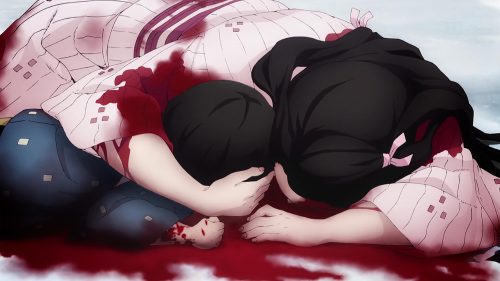
Perhaps more importantly, and definitely more ominously; could the slaughter of Tanjiro’s family have been motivated by a Frieza-esque fear of the “super Demon Slayers”, the Sun Breathers? Or a symbolic and literal destruction of the very source of the Breathing Arts and, hence, the destruction of the Demon Slayers Kibutsuji Muzan hates so much?
Final Thoughts
Kimetsu no Yaiba: Yuukaku-hen (Kimetsu no Yaiba - Demon Slayer: Entertainment District Arc) has been an interesting addition to the series thus far. While this particular issue came up early on, it’s still got major consequences for the trajectory of Tanjiro as a Demon Slayer and as a character. What do you think about the Sun Breathers? Is their apparent near-extinction a matter of coincidence, or something more sinister afoot? Drop a comment and tell us what you think!
Recommended Post




